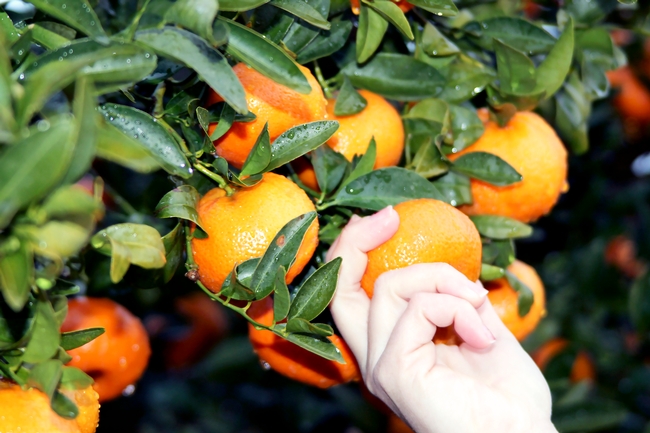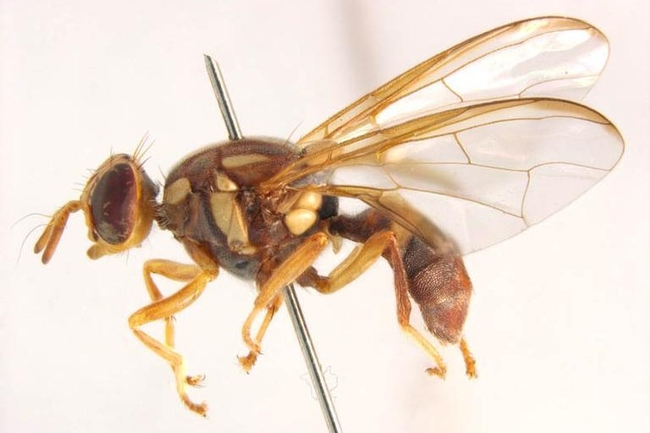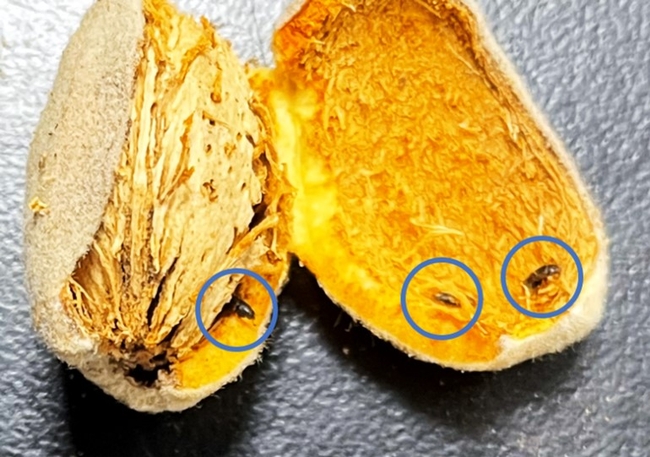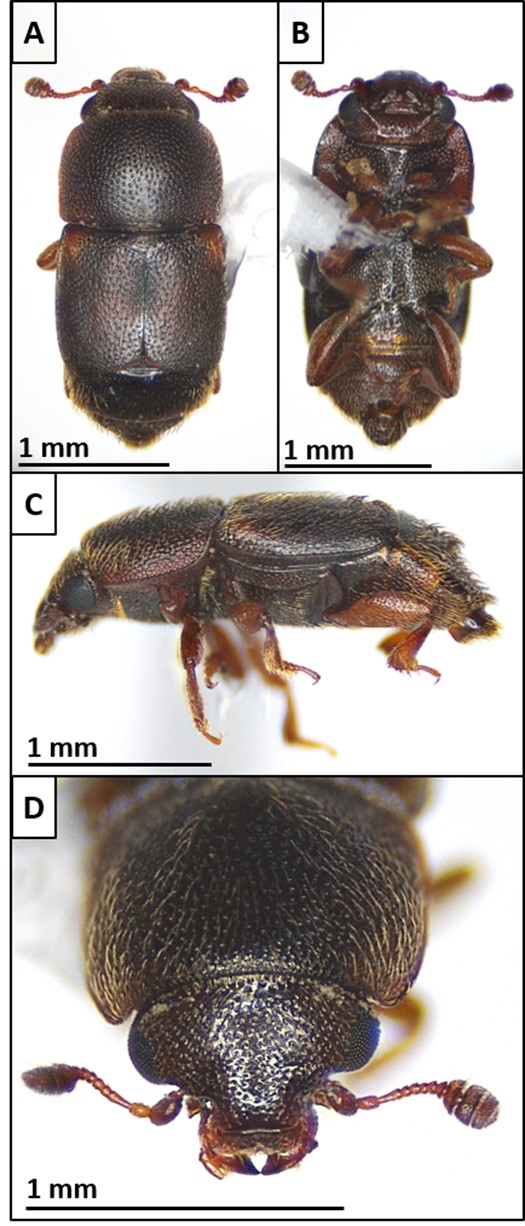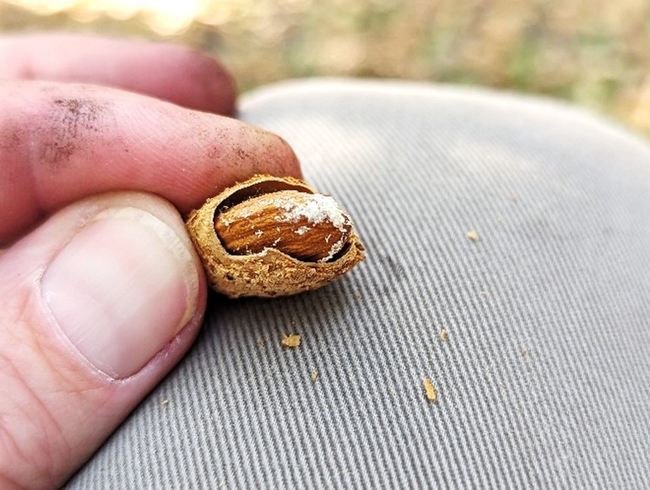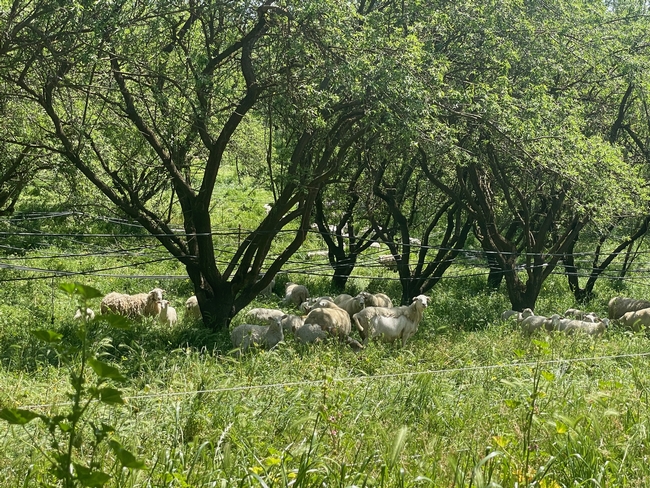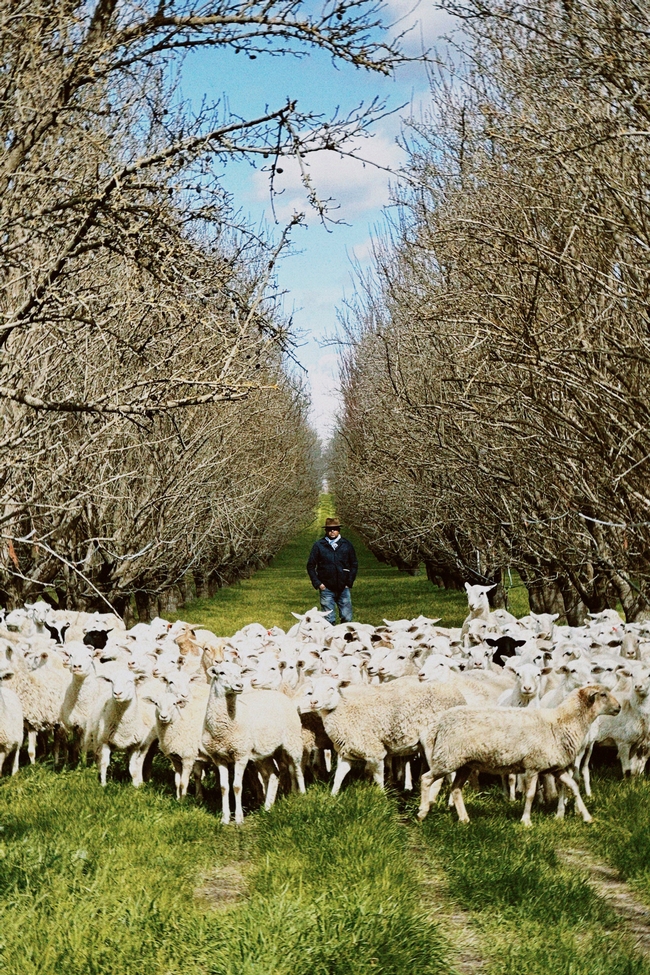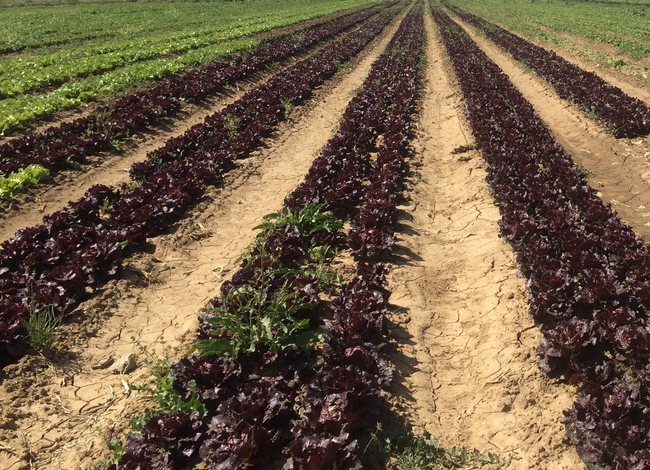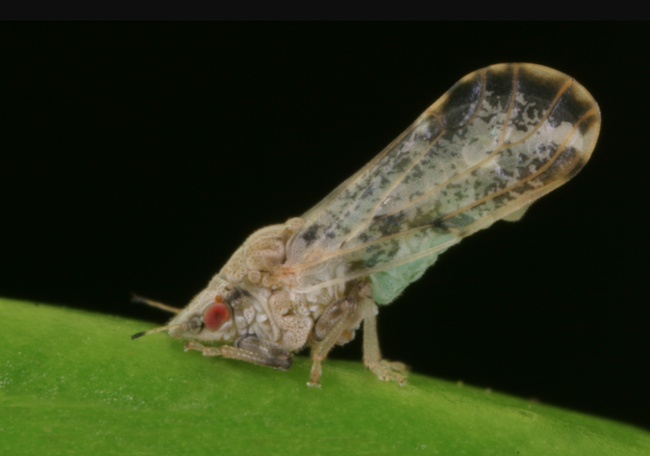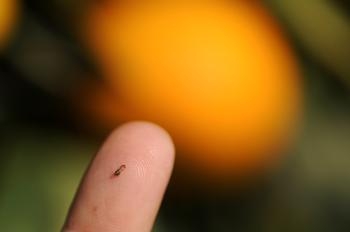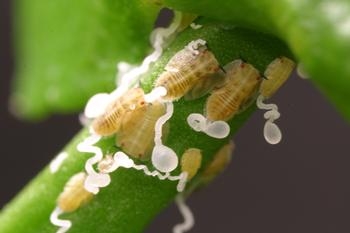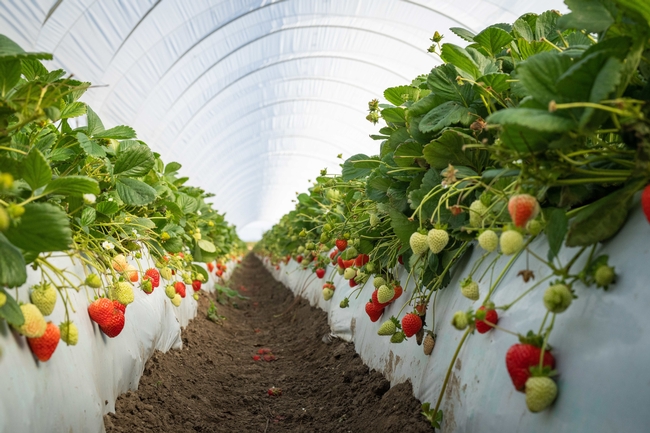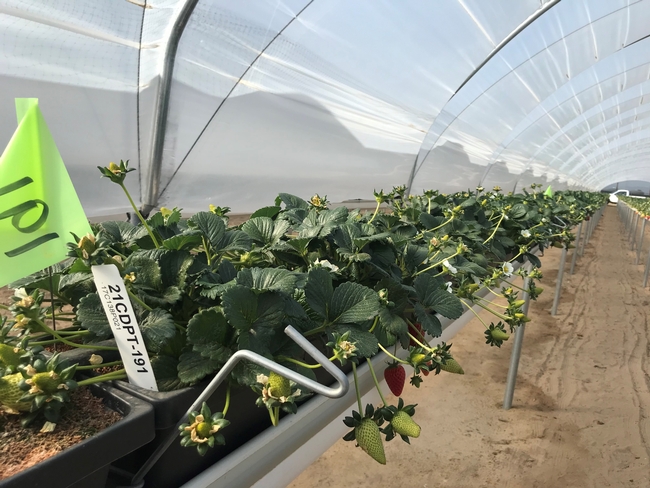Posts Tagged: pest
First-ever Queensland fruit fly quarantine restricts moving homegrown produce
QFF quarantine in LA, Ventura counties among seven fruit fly quarantines statewide
Residents in multiple Southern California and Northern California counties should not move homegrown fruits and vegetables from their properties to help contain several species of fruit fly that can destroy crops and impact the livelihoods of local farmers.
With sharing and gifting of food integral to the holiday season, the California Department of Food and Agriculture is reminding people to heed the seven active fruit fly quarantines aimed at controlling the Mediterranean fruit fly, Oriental fruit fly, Tau fly and Queensland fruit fly. The links below describe quarantine zone boundaries:
- Mediterranean fruit fly: Los Angeles County, Leimert Park Area
- Oriental fruit fly: San Bernardino and Riverside Counties, Redlands and Yucaipa Areas
- Oriental fruit fly: Sacramento County, Rancho Cordova Area
- Oriental fruit fly: Contra Costa County, Brentwood Area
- Oriental fruit fly: Santa Clara County, Santa Clara Area
- Tau fly: Los Angeles County – Stevenson Ranch, Valencia, Santa Clarita Areas
- Queensland fruit fly: Ventura and Los Angeles Counties, Thousand Oaks Area
People within these zones should consume or process (i.e., juice, freeze or cook) their homegrown fruits and vegetables at the place of origin and not move them off their property. Uneaten produce should be double-bagged in plastic bags and disposed of in the landfill bin – not compost or green waste.
Queensland fruit fly threatens California citrus, other crops
The Queensland fruit fly (Bactrocera tryoni) quarantine is the first of its kind in the U.S. Although QFF was first seen in California in 1985, the recent detection of two adult males triggered the unprecedented quarantine action by USDA's Animal and Plant Health Inspection Service and CDFA.
“This pest has earned a bad reputation for wreaking havoc on fruit production in Australia, where it is native,” said Hamutahl Cohen, University of California Cooperative Extension entomology advisor for Ventura County. “Adult flies lay their eggs in fruit, and the eggs hatch into larvae that then feed on the fruit, causing damage.”
And while females of other fruit fly species live for only two or three months, QFF females are unique in that they can live up to a year, according to Cohen.
“Once QFF populations take root, they're challenging to manage because females can each lay up to 100 eggs per day,” Cohen said.
In addition to being highly adaptable to a variety of environmental conditions, QFF has more than 170 host plants – including a wide range of California commodities such as citrus, grape, strawberry, fig, avocado, apricot, peach, cherry, nectarine, plum, pear, apple, tomato and sweet pepper.
The threat to citrus is especially concerning, as Southern California growers continue to grapple with the specter of spreading huanglongbing (HLB) disease, which kills citrus trees. Cohen said residents of citrus-growing regions can do their part to help their neighbors and local economy by respecting quarantine restrictions.
“Growers are already dealing with other invasive species like Asian citrus psyllid [vector of HLB pathogen], so we as homeowners need to prevent the spread of fruit flies to reduce the burden on them,” she explained.
While a spike this year in the detections of multiple fruit fly species was likely caused by a host of factors, Cohen speculates that increased post-pandemic travel is helping to move the flies. And with holiday travel in full swing, she said it's important to practice “Don't Pack a Pest” principles.
“Invasive species often hitchhike on fruits and vegetables brought into California by travelers – that's why we often first find invasive species in urban and suburban backyards, and not on farms,” Cohen said. “Travelers entering the U.S. can visit dontpackapest.com to learn about which products they can and cannot bring back with them.”
To report a suspected infestation of fruit fly larvae in homegrown produce, call the CDFA pest hotline at 1-800-491-1899. Growers with questions and concerns are urged to contact their local agricultural commissioner's office.
New pest infesting almonds and pistachios in the San Joaquin Valley
Crop sanitation will be key to controlling the invasive carpophilus beetle
Growers and pest control advisers (PCAs) should be on the lookout for a new pest called carpophilus beetle (Carpophilus truncatus). This pest was recently found infesting almonds and pistachios in the San Joaquin Valley, and is recognized as one of the top two pests of almond production in Australia. Damage occurs when adults and larvae feed directly on the kernel, causing reductions in both yield and quality.
Populations of carpophilus beetle were first detected in September in almond and pistachio orchards by University of California Cooperative Extension Specialist Houston Wilson of UC Riverside's Department of Entomology. Pest identification was subsequently confirmed by the California Department of Food and Agriculture.
Wilson is now working with Jhalendra Rijal, UC integrated pest management advisor, North San Joaquin Valley; David Haviland, UCCE farm advisor, Kern County; and other UCCE farm advisors to conduct a broader survey of orchards throughout the San Joaquin Valley to determine the extent of the outbreak.
To date, almond or pistachio orchards infested by carpophilus beetle have been confirmed in Stanislaus, Merced, Madera and Kings counties, suggesting that the establishment of this new pest is already widespread. In fact, some specimens from Merced County were from collections that were made in 2022, suggesting that the pest has been present in the San Joaquin Valley for at least a year already.
“It has likely been here for a few years based on the damage we've seen," Rijal said.
This invasive beetle overwinters in remnant nuts (i.e. mummy nuts) that are left in the tree or on the ground following the previous year's harvest. Adults move onto new crop nuts around hull-split, where they deposit their eggs directly onto the nut. The larvae that emerge feed on the developing kernels, leaving the almond kernel packed with a fine powdery mix of nutmeat and frass that is sometimes accompanied by an oval-shaped tunnel.
Carpophilus beetle has been well-established in Australia for over 10 years, where it is considered a key pest of almonds. More recently, the beetle was reported from walnuts in Argentina and Italy as well. Carpophilus truncatus is a close relative to other beetles in the genus Carpophilus, such as the driedfruit beetle (C. hemipterus) that is known primarily as a postharvest pest of figs and raisins in California.
Monitoring for carpophilus beetle is currently limited to direct inspection of hull split nuts for the presence of feeding holes and/or larvae or adult beetles. A new pheromone lure that is being developed in Australia may soon provide a better monitoring tool for growers, PCAs and researchers.
“We're lucky to have colleagues abroad that have already been hammering away at this pest for almost a decade,” said Haviland. “Hopefully we can learn from their experiences and quickly get this new beetle under control.”
The ability to use insecticides to control carpophilus beetle remains unclear. The majority of the beetle's life cycle is spent protected inside the nut, with relatively short windows of opportunity available to attack the adults while they are exposed. The location of the beetles within the nut throughout most of their life cycle also allows them to avoid meaningful levels of biological control.
In the absence of clear chemical or biological control strategies, the most important tool for managing this beetle is crop sanitation.
“Given that this pest overwinters on remnant nuts, similar to navel orangeworm, crop sanitation will be fundamental to controlling it,” Wilson said. “If you needed another reason to clean up and destroy mummy nuts – this is it.”
In Australia, sanitation is currently the primary method for managing this pest. And here in California, new research and extension activities focused on carpophilus beetle are currently in the works.
“It's important that we get on top of this immediately,” said Wilson. “We're already starting to put together a game plan for research and extension in 2024 and beyond.”
If you suspect that you have this beetle in your orchard, please contact your local UC Cooperative Extension farm advisor (https://ucanr.edu/About/Locations/), County Agricultural Commissioner (https://cacasa.org/county/) and/or the CDFA Pest Hotline (https://www.cdfa.ca.gov/plant/reportapest/) at 1-800-491-1899.
USDA awards $2 million to study livestock grazing in organic orchards
UC, The Organic Center, University of Rhode Island partner on $3.5m food-safety study for organic produce growers
Grazing sheep and other livestock can help convert cover crops to fertilizer for orchard crops. To develop best management practices, the University of California and The Organic Center are collaborating on research to help organic orchard growers safely incorporate livestock grazing into their farming practices. The project is funded by a $2 million grant recently awarded through the U.S. Department of Agriculture's Organic Agriculture Research and Extension Initiative research program.
Interest in grazing livestock on cover crops in nut orchards has increased in recent years. However, research is needed to determine the best way to improve soil health and pest suppression, and to address concerns about food-borne pathogens and food safety.
“Organic farmers typically follow the USDA National Organic Program standards for raw animal manure, waiting 90 to 120 days between incorporating raw manure into the soil and harvesting the crop,” said Alda Pires, UC Cooperative Extension urban agriculture and food safety specialist in the School of Veterinary Medicine at UC Davis.
“Little research has been conducted to verify adequate waiting periods to reduce contamination risks in integrated crop-livestock production systems,” she said. “This research will fill the knowledge gap and facilitate the development of science-based food safety guidelines for grazing small ruminants in orchards.”
For this four-year project, “Influence of Orchard Grazing on Soil Health and Pest Control While Mitigating Food Safety Risk,” the scientists will study organic almond, walnut and pistachio orchards in two distinct nut-growing regions in California – the Sacramento Valley and San Joaquin Valley. The scientists will assess the effects of livestock grazing of cover crops on bacteria populations, soil health, pest control and economics.
Building soil health
“Growers have consistently raised the need for more information on grazing impacts on nutrient availability during tree growth, as well as potential to build up the biological, physical and chemical pillars of soil health,” said Amelie Gaudin, associate professor and endowed chair of agroecology in the UC Davis Department of Plant Sciences.
Livestock grazing may provide an opportunity to quickly enhance the amount of nitrogen that can be used by plants and microbes when the cover crop is terminated. “This project will help growers develop nitrogen budgets for these more diversified systems and quantify additional benefits and potential tradeoffs for soil health – such as compaction and salinity – to guide the development of place-based best management practices,” Gaudin said.
Pest management
Houston Wilson, UC Cooperative Extension specialist in the Department of Entomology at UC Riverside, will be studying the effects of livestock grazing on orchard pests.
“Navel orangeworm, or NOW, is by far the most destructive pest of almonds and pistachios,” Wilson said. “These moths overwinter in unharvested nuts in the orchard, and so removal and destruction of remnant nuts over the winter is the foundation of NOW control. While farmers typically use machinery to do this, grazing with animals may present a unique alternative that is more cost-effective and provides additional ecosystem benefits, such as soil health and weed control.”
Outreach to farmers
As part of the project, The Organic Center was awarded $75,000 to work with UC Agriculture and Natural Resources to direct national extension and education outreach activities. These will include a social media campaign, webinars and educational sessions and a technical report for growers.
“There is an increasing interest from organic farmers to learn how to incorporate livestock into their operations to gain better soil health and fertility,” said Amber Sciligo, director of science programs at The Organic Center.
“This research is very exciting because it will holistically explore the potential risks and benefits of livestock not just to soil health, but also pest control – a truly interdisciplinary project that matches the whole system of the organic farm.”
Produce food-safety management tools
For another organic food-safety project, Pires and Sciligo will be working with Patrick Baur, professor of Sustainable Agriculture and Food Systems at the University of Rhode Island.
The University of Rhode Island and The Organic Center received $3.5 million from USDA's Organic Agriculture Research and Extension Initiative research program for the new organic food-safety education project.
“We're going to develop a new food safety management tool designed specifically for organic soil amendments,” said Baur, who is leading the project. “We're also going to develop a suite of new communication and training tools aimed at the entire fruit and vegetable sector to build a shared language between organic agriculture and the food safety community and help them work better together.”
As part of the produce project, Pires of UC Davis was awarded $1.16 million to conduct a risk assessment and create a publicly accessible dashboard to meet the specific needs of organic growers operating at different scales, under different cropping systems, in different regions.
Also participating in this project will be Beatriz Martinez Lopez, professor in the School of Veterinary Medicine at UC Davis, and Abhinav Mishra and Govindaraj Dev Kumar of the University of Georgia.
Infected citrus pest that spreads disease found in Ventura County
Residents urged to check their citrus trees for Asian citrus psyllid
An insect carrying the huanglongbing bacteria, a pathogen that kills citrus trees, has been found on a residential citrus tree in Ventura County, according to the California Citrus Pest & Disease Prevention Program.
“This really is a devastating find,” said Ben Faber, UC Cooperative Extension subtropical crops advisor for Ventura and Santa Barbara counties. “It means that Asian citrus psyllid that is infected with the HLB bacteria is present in the middle of a citrus-growing area that is currently and historically important for lemon production.”
This is the first confirmed case in Ventura County of Asian citrus psyllid testing positive for the bacterium Candidatus Liberibacter asiaticus. The bacterium is associated with huanglongbing, or HLB, also called citrus greening disease. HLB can kill a citrus tree in as few as five years, and there is no known cure or remedy. All commonly grown citrus varieties are susceptible to the pathogen, which means commercial citrus growers should monitor and treat to manage its vector to protect their groves. The additional expenses come at a bad time.
“The disease is a tree killer and it's happening to growers who are already having difficult times with low lemon prices making it difficult for them to stay and continue farming,” Faber said.
The infected Asian citrus psyllid was found in the Santa Paula area, but the UCCE farm advisor asks all Ventura County citrus tree owners to be on the lookout for the tiny, mottled brown insect about the size of an aphid.
“It takes a whole community to address the disease in order to protect all the trees,” Faber said. “If one tree remains, it potentially can infect all the surrounding citrus trees.”
The psyllid takes the bacteria into its body when it feeds on bacteria-infected plants. When a bacteria-carrying psyllid flies to a healthy plant and injects the bacteria into the plant as it feeds, it can spread the disease.
Hamutahl Cohen, UCCE entomology advisor for Ventura County, saw the devastation of HLB on citrus in Florida, where she worked before moving to California.
“After 2005, we saw that HLB spread rapidly across Florida, resulting in tree mortality and increased costs of production,” she said. “Due to HLB, orange yield in Florida decreased about 40%. In California, growers will benefit if the public helps them by monitoring their backyard citrus trees."
As of Sept. 20, HLB had not been detected in any Ventura County citrus trees.
Neil McRoberts, UC Davis professor of plant pathology, urged vigilance, but not panic. “We have long suspected that ACP infected with the pathogen are present in Ventura, the results simply confirm that suspicion.”
The only way to protect citrus trees from the lethal disease is to prevent the spread of the HLB pathogen by controlling psyllid populations and destroying infected trees.
“Not all ACP carry the bacteria, but if one is found, it means either that an infected insect has flown or hitchhiked in,” Faber said. The psyllids can fly pretty far by themselves, but they can move great distances when people move them.
To identify Asian citrus psyllid, see pictures of the psyllid and its life stages on the UC Agriculture and Natural Resources website at http://ucanr.edu/acp and the UC Integrated Pest Management Pest Note at https://ipm.ucanr.edu/PMG/PESTNOTES/pn74155.html. More information is also available at https://californiacitrusthreat.org , a website maintained by the Citrus Pest & Disease Prevention Program, an initiative funded by California citrus growers and administered by the California Department of Food and Agriculture.
Beth Grafton-Cardwell, UC Cooperative Extension citrus entomology specialist emeritus, and Mark Hoddle, UCCE entomology specialist based at UC Riverside, demonstrate how to look for the various stages of the psyllid in the video “Check your citrus trees for Asian citrus psyllid” on YouTube https://www.youtube.com/watch?v=UhqwUQm0zpk.
Report suspected cases of the psyllid or disease to your county agricultural commissioner's office or call the CDFA hotline at 1-800-491-1899.
Commercial growers can get the latest news about ACP at the Citrus Pest & Disease Prevention Program website https://citrusinsider.org.
More information about Asian citrus psyllid can be found in ANR publication 8205 https://escholarship.org/uc/item/8vr1376d, ANR publication 8218 https://escholarship.org/uc/item/48v1v164 and on the U.S. Department of Agriculture website https://www.aphis.usda.gov/aphis/resources/pests-diseases/hungry-pests/the-threat/asian-citrus-psyllid/asian-citrus-psyllid.
UC Davis releases 5 strawberry varieties resistant to deadly fungal disease
Strawberries selectively bred for Fusarium wilt resistance and high yields
The University of California, Davis, is releasing five new strawberry varieties that are resistant to the soilborne disease Fusarium wilt, have high yields and improved fruit quality.
UC Eclipse, UC Golden Gate, UC Keystone, UC Monarch and UC Surfline will be available for sale to California nurseries from Foundation Plant Services in April.
Roughly 88% of strawberries grown in the nation come from California. Fusarium wilt is one of the most common reasons for crop loss and death and yet 55 to 59% of cultivars planted in the state since 2014 have not been resistant, according to UC Davis research.
This is the first release from the UC Davis Strawberry Breeding Program where all the cultivars have Fusarium wilt resistance. They are meant to replace susceptible plants on the market such as Monterey, UCD Royal Royce and UCD Valiant.
Monarch was also developed specifically as a prototype for mechanical harvesting – another first out of the breeding program, which dates to the 1930s and has released 72 patented cultivars over the decades.
“These provide the same yield or better and they are Fusarium resistant,” said Steve Knapp, a Distinguished Professor in the Department of Plant Sciences and director of the UC Davis Strawberry Breeding Program. “They have a better collection of traits. They're superior.”
Knapp is a faculty member based in the College of Agricultural and Environmental Sciences at UC Davis and shares the UC Agriculture and Natural Resources land-grant mission of the Agricultural Experiment Station.
Dangerous pathogen
Fusarium wilt didn't present much of a danger to strawberry crops until after the fumigant methyl bromide was phased out of use in the United States in 2005. But the pathogen had always been in the soil, and cases of wilt appeared a year later and increased over time, leading to concerns that a Fusarium wilt pandemic could destroy the crop in California.
“The disease has taken off fast and we need to react quickly to address the need,” said Glenn Cole, a breeder and field manager with the Strawberry Breeding Program.
Knapp said the program tries to “encourage people to consider things like disease resistance” and routinely invites growers and other experts to events showcasing research breakthroughs and improved cultivars.
Varieties for the seasons
The new strawberry varieties each have improved flavor and characteristics that allow for near year-round growing around California, where about 1.8 billion pounds of the fruit are harvested each year. Some of the cultivars are adapted for production in the southern part of the state while others do well under the long daylight hours of summer along the coast.
Eclipse, a “summer plant” cultivar, has the potential to increase grower profitability as it produces in the fall and winter, and yields during research testing were 54% higher than similar cultivars. “We expect this cultivar to have wide commercial appeal,” Knapp said. “Eclipse is going to eclipse them all.”
Golden Gate and Keystone are “day neutral.” Those type of cultivars grow throughout the summer on about 60 percent of strawberry farming acres in the state. The “short-day” plants Surfline and Monarch are resistant to Verticillium wilt and Phytophthora crown rot.
Surfline and Eclipse are firmer and promise longer shelf lives. Monarch provides growers with improved fruit qualities relative to other mass-producedcultivars and has characteristics needed for advances in mechanical harvesting, Knapp said.
Genetic tools
Breeding program experts have long been researching ways to improve strawberry cultivars so the crop can withstand pests, disease and other stressors. To find plants that had Fusarium wilt resistance, they obtained the DNA of thousands of plants in field studies. The scientists also developed genetic tools to screen the plants and identify the genes that have resistance to the Fusarium pathogen.
Knowing that information allowed the team to breed resistance into and develop new cultivars, at a faster rate than previous efforts. “These tools have allowed us to sweep out the susceptibility and bring in resistance,” Knapp said.


